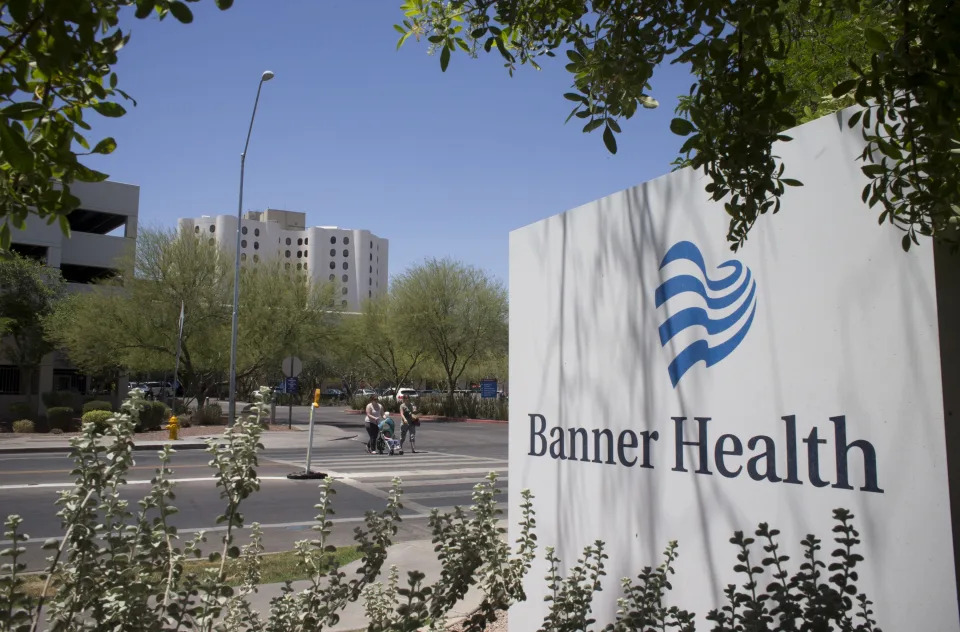The Pandemic Cash That Bolstered School Budgets Is About to Run Out; Most Arizona Hospital CEOs Got Raises, Made Millions, During Pandemic, IRS Filings Say, and other C-Virus related stories
WSJ: The Pandemic Cash That Bolstered School Budgets Is About to Run Out:
Schools across the country are preparing to see their budgets shift from flush to strained as billions of pandemic aid runs out in less than a year, putting at risk staffing and programs added with Covid-relief funds.
The 2023-24 school year represents the last full year in which districts can spend down what remains of the $180 billion in federal Covid-19 aid. High-poverty districts typically received more emergency relief, so now face steeper cuts as the money runs out.
In New York City, which received $7 billion in education aid, the state comptroller projects that the schools will run short of money to continue to fund prekindergarten expansion and a widely attended summer program. In Los Angeles, the district is funding more than 2,000 staff positions this year with the federal aid, while its budget office is warning of a “structural deficit.”
At the moment, schools largely remain flush. But they are barreling toward a fiscal cliff at the same time students remain behind academically. That means officials are attempting a high-stakes balancing act: spending the remaining Covid-relief funds effectively, while trying to limit disruptive budget cuts in later years.
“The loss of some of that money will destabilize districts,” said Marguerite Roza, the director of Edunomics Lab, a Georgetown University research center. “They have this complicated task this year of hurrying to spend it down, while simultaneously planning for it to be gone.”
Schools find themselves in this unusual position because of two federal relief packages. One was signed by President Donald Trump at the end of his tenure in late 2020, the other by President Biden soon after as his term began. Together they pumped $180 billion into U.S. public schools. It was a massive sum, nearly three times what the federal government spent on schools in the year before the onset of the pandemic.
The money was distributed in part based on poverty rates. School systems with predominantly low-income students received an average of $6,000 a student, compared with $1,000 a pupil in affluent areas, according to an Edunomics Lab analysis. Although some of the funding was earmarked for addressing learning loss, school-district leaders had wide discretion over how to spend the money. The last of the money must be budgeted by the end of September 2024. —>READ MORE HERE
Most Arizona hospital CEOs got raises, made millions, during pandemic, IRS filings say:
More than half the top executives at Arizona’s largest nonprofit and public health systems who were leading their organizations during the deadly worldwide COVID-19 pandemic got pay hikes during those tumultuous years.
Peter Fine, who has headed Phoenix-based Banner Health since 2000, was the highest paid nonprofit hospital CEO in Arizona in 2021, according to IRS records. Banner Health is the state’s largest private employer and one of the country’s largest health systems.
Fine’s total reported pay package that year was $12.4 million, a 10% increase from 2019, IRS records show. Banner officials said the amount includes $4.4 million in retirement pay that was accrued but not paid out.
Six CEOS of Arizona’s 10 largest hospitals and hospital systems saw increases in their total reported compensation between 2019, 2020 and 2021. Three did not. One did not start his job until the 2021 fiscal year.
Some of those who got raises had double-digit percentage pay bumps.
U.S. hospitals faced an overwhelming and unprecedented crisis situation during the pandemic. Yet critics question whether hospital CEO pay is too high at a time when many front-line health care workers have quit from burnout and when many patients struggle to pay medical bills and find affordable care.
Adding to public interest in hospital CEO salaries, 75,000 health care workers employed by the nonprofit Kaiser Permanente health care system walked off the job Oct. 4 because of what they called inadequate pay and short staffing. Several national media reports have called the three-day walkout the largest U.S. health care strike in recent history. The strike involved workers in multiple states, including California, but none in Arizona.
Nonprofit hospital CEOs are outliers in the nonprofit world, according to an Aug. 11 blog post by Judith Garber, a senior policy analyst at The Lown Institute, a nonprofit public policy think tank that advocates for an improved health care system.
While most nonprofit CEOs earn between $90,000 and $250,000 on average, the average nonprofit hospital CEO gets paid nearly $700,000, Garber wrote.
“Even presidents of universities, the next-highest paid in the nonprofit sector, make about $300,000 less on average than the leaders of nonprofit hospitals,” she wrote.
It’s unacceptable that nonprofit hospitals received $28 billion in tax breaks in 2020 while reducing the amount of affordable health care they provide to the working class. If these hospitals don’t substantially increase charity care they should lose their tax exempt status. —>READ MORE HERE
Follow links below to relevant/related stories and resources:
The Top COVID-19 Hot Spots in the U.S.
Moderna shares sink as company forecasts 2024 sales decline
USA TODAY: Coronavirus Updates
YAHOO NEWS: Coronavirus Live Updates
NEW YORK POST: Coronavirus The Latest







Comments are closed.